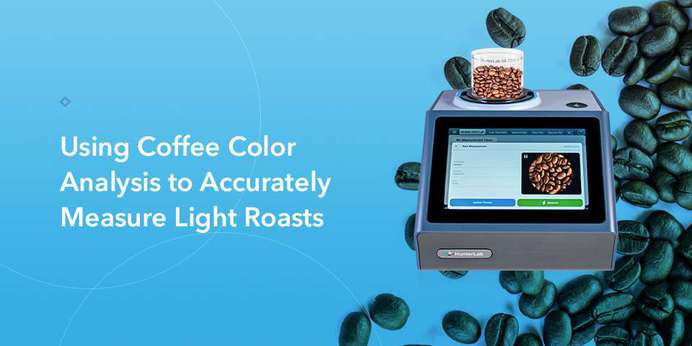
One of my friends owns a chain of coffee shops that are renowned for hand-roasting their own light coffee blends. For years, he used the same roaster to give his light coffee beans a perfect soft caramel color. To get this particular hue, he had to time his roast down to the second, achieving a consistent batch each day.
As his business grew, he purchased a set of new, more advanced coffee roasters and quickly found that his old roasting times no longer applied. His new roasters tend to overheat the beans, resulting in much darker coffee than he prefers. To correct for this, he turned to spectrophotometry for coffee color analysis, ensuring that all of his roasts meet his — and his customers’ — high standards to help his business flourish.
Using a spectrophotometer to measure the color of your light coffee allows you to achieve consistency in your beans and accurately calibrate your roasting equipment to produce coffees of the highest quality. Both of these factors result in better-tasting coffee and more satisfied customers.
Light Roasts Are a Sign of Complex Flavors
When a customer buys a package of light roast coffee beans or purchases a cup of coffee made from those beans, they expect a certain flavor and color profile. Generally, light roast coffee tastes more complex than darker roasts, with strong fruit and floral flavors. If a roaster leaves the beans over the heat for even a few minutes too long, these fruity and floral notes will begin to disappear, resulting in a darker coffee that tastes richer and less complex, with even some hint of bitterness.
This flavor alteration is why coffee color analysis is perhaps more vital for lighter roasts than for any other coffee style. While it’s still important to have a consistent roast no matter how dark you make it, a light coffee roast often has more delicate flavors that you’ll need to protect during this process — you can’t over-roast these beans for even a moment too long without risking a bitter aftertaste.
Unfortunately, our eyes often have trouble detecting the subtle difference between a light roast bean and one that is veering into a medium or dark roast range. If for instance, you look at HunterLab’s Coffee Color Index (HCCI), you’ll see that light roasts range from 21.8 to 12.7 on the scale.
Although you might be able to clearly see the difference between a very light roast (21.8) and a medium-light roast (12.7), the difference between more subtle shade changes is less obvious. A light roast (18.8) and a moderately light roast (15.7) could look almost identical to the naked eye, even though one tastes bitter and less fruity. A spectrophotometer can help you identify these subtle shade changes in your beans, leading to more refined flavors and precision than you could achieve by estimating the color yourself.


